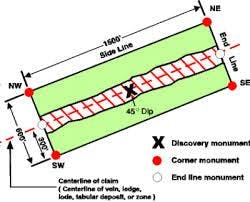Building Fences = Defining Patents

In obtaining strong enforceable patents, it is important to define your invention well.
The requirements to fulfil this ground for patentability has substantially increased in Australia following the “Raising the Bar” legislation of 2013 and has also increased in the USA following recent US Supreme Court decisions.
There are two sides to patent law. The first is to define the scope of the invention in a set of claims and for you to exploit that claimed invention. The second is to maintain others to not infringe your claimed invention and not unfairly benefit from your monopoly to the claimed invention.
Building FENCES
This definition of invention and protection of your monopoly of the invention can be seen as analogous to erecting a fence to define your claim and maintaining other parties do not trespass into your fenced area, or if they do, they pay rent for the privilege.
However the fence can only stand for the maximum 20 year monopoly term and then the previously fenced area becomes available for all to use.
Some problems of properly defining your invention can be illustrated by maintaining this analogy. For example:
- If you claim an invention by erecting a fence which includes some of your neighbour’s property then you must have not defined your invention properly and your claim will fail by being considered imprecise.
- However unlike the prospectors in the “good old days” you cannot merely stake a claim and erect your fence and then go and explore to find your gold. To be able to validly claim your invention you must show that within your fence you have a provable claim in that your invention is novel and inventive over the neighbouring inventions.

- It is not sufficient to show you have located a gold mine and then to stake a twenty mile (we are talking as if we are in the olden days) claim around the gold mine. Instead you must show that each part of your fenced area is as worthy to be claimed and you state how each part fulfills that claim. Otherwise you should restrict your fenced area to your claimed invention of the gold mine or your whole fenced area could be considered invalid for being speculative.
- If your fence is not solid or continuous but instead you have set down marker posts every hundred metres or relied on the tree line or a ridge line of the undulating land to define your claimed property then you are leaving open a level of indistinctiveness or lack of clarity. This can raise disputes of ownership between neighbours and raise doubts when trying to show whether someone has trespassed into your unclearly defined claim.
In the Australian law the test is identified as:
A complete specification must:
- disclose the invention in a manner which is clear enough and complete enough for the invention to be performed by a person skilled in the relevant art; and
- disclose the best method known to the applicant of performing the invention; and
- where it relates to an application for a standard patent—end with a claim or claims defining the invention; and
The claim or claims must be clear and succinct and supported by matter disclosed in the specification.
In the recent US Supreme Court cases the US test is identified as:
A patent is invalid for indefiniteness if its claims, read in light of the specification delineating the patent, and the prosecution history, fail to inform, with reasonable certainty, those skilled in the art [at the time the patent was filed] about the scope of the invention…
Therefore it is important you hire a good fence maker to define your inventions.
At Baxter IP we have patent attorneys that have fulfilled their apprenticeship in fence building and are experts in fully describing and claiming your inventions.
